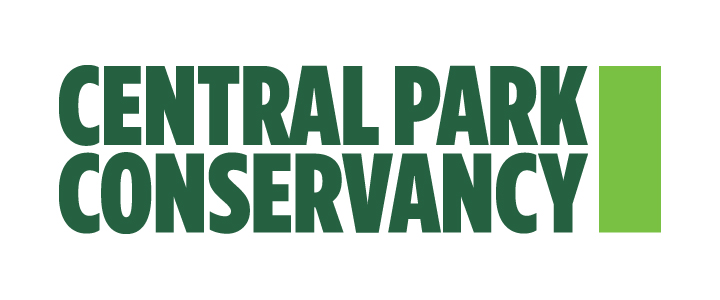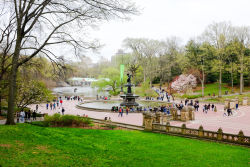Central Park
McGown's Pass
McGown’s Pass, part of the escarpment that crosses Manhattan around 106th Street, consists of two rock outcrops located on either side of Kingsbridge Road. The Pass takes its name from a popular local tavern owned by the McGown family during the late 17th and early 18th centuries.
After his early Revolutionary War defeat at the Battle of Brooklyn (1776), General George Washington (1732-1799) moved most of his troops north of McGown’s Pass, leaving only a small contingent to the south. Hoping to trap the Continentals, on the morning of September 15, 1776, British troops landed from dozens of transport ships anchored in Kips Bay (near present-day 34th Street). Washington, headquartered at the Morris Mansion on West 160th Street and Edgecombe Avenue, charged southward through McGown’s Pass, directing his men to counter the invading force.
Rallying a small force of soldiers, Washington ordered them to march westward across Manhattan Island, then north on Bloomingdale Road into Harlem Heights. A small band of Maryland militiamen (near present-day 92nd Street and 5th Avenue) kept the British from advancing westward. As in the Battle of Brooklyn, the Marylanders held the line against superior forces, securing the American retreat. The British Army wisely built a small fortification over the pass to control the flow of troops in and out of the city. Seven years later, at the war’s successful conclusion, colonial soldiers under the command of General Henry Knox (1750-1806) marched back through the pass and down Manhattan Island to liberate the city.
During the War of 1812 (1812-1814), McGown’s Pass was a lookout point for the Americans who anticipated a British invasion. When the British bombarded Stonington, Connecticut in August 1814, the American command began to fear that the British might attack from the north, and a massive mobilization attempt by civilians contributed to the building of a chain of fortifications on the high bluffs of Upper Manhattan and Central Park. Several structures were built. Connecting all of these fortifications were four-foot high defensive walls (breastworks) made of earth, but the British never invaded.
Although the original plan for Central Park terminated at 106th Street, the northernmost section was purchased in 1863, and remnants of these earthwork fortifications remained. The designers of the park, Calvert Vaux (1824-1895) and Frederick Law Olmsted (1822-1903), decided to leave the structures and earthworks as they stood. In 1990, the Central Park Conservancy, while preserving the north end of the park, worked with archaeologists to identify the breastworks that had eroded over time. The remains of McGowan’s Pass stand as a reminder of the role that New York City played in the early history of the American Republic.
Check out your park's Vital Signs
Clean & Safe
Green & Resilient
Empowered & Engaged Users
Share your feedback or learn more about how this park is part of a
Vital Park System
Contacts
Central Park Information: (212) 310-6600
Central Park Information (for the Hearing Impaired): (800) 281-5722
Belvedere Castle, The Henry Luce Nature Observatory: (212) 772-0210
The Charles A. Dana Discovery Center: (212) 860-1370
The Dairy Visitor Center and Gift Shop: (212) 794-6564
North Meadow Recreation Center: (212) 348-4867
Loeb Boathouse (Bike rentals, boat rentals & gondolas): (212) 517-2233
Carousel: (212) 879-0244
Fishing at Harlem Meer (Catch & Release): (212) 860-1370
Harlem Meer Performance Festival: (212) 860-1370
Horseback Riding - Claremont Stables: (212) 724-5100
Metropolitan Opera (Performances on the Great Lawn): (212) 362-6000
New York Philharmonic (Performances on the Great Lawn): (212) 875-5709
Shakespeare in the Park - The Public Theater at the Delacorte Theater: (212) 539-8655
Central Park SummerStage: (212) 360-2777
Swedish Cottage Marionette Theater: (212) 988-9093
Tennis: (212) 280-0205
Weddings, Ceremonies and Photography at the Conservatory Garden: (212) 360-2766
Wildlife Center & Tisch Children's Zoo: (212) 439-6500











